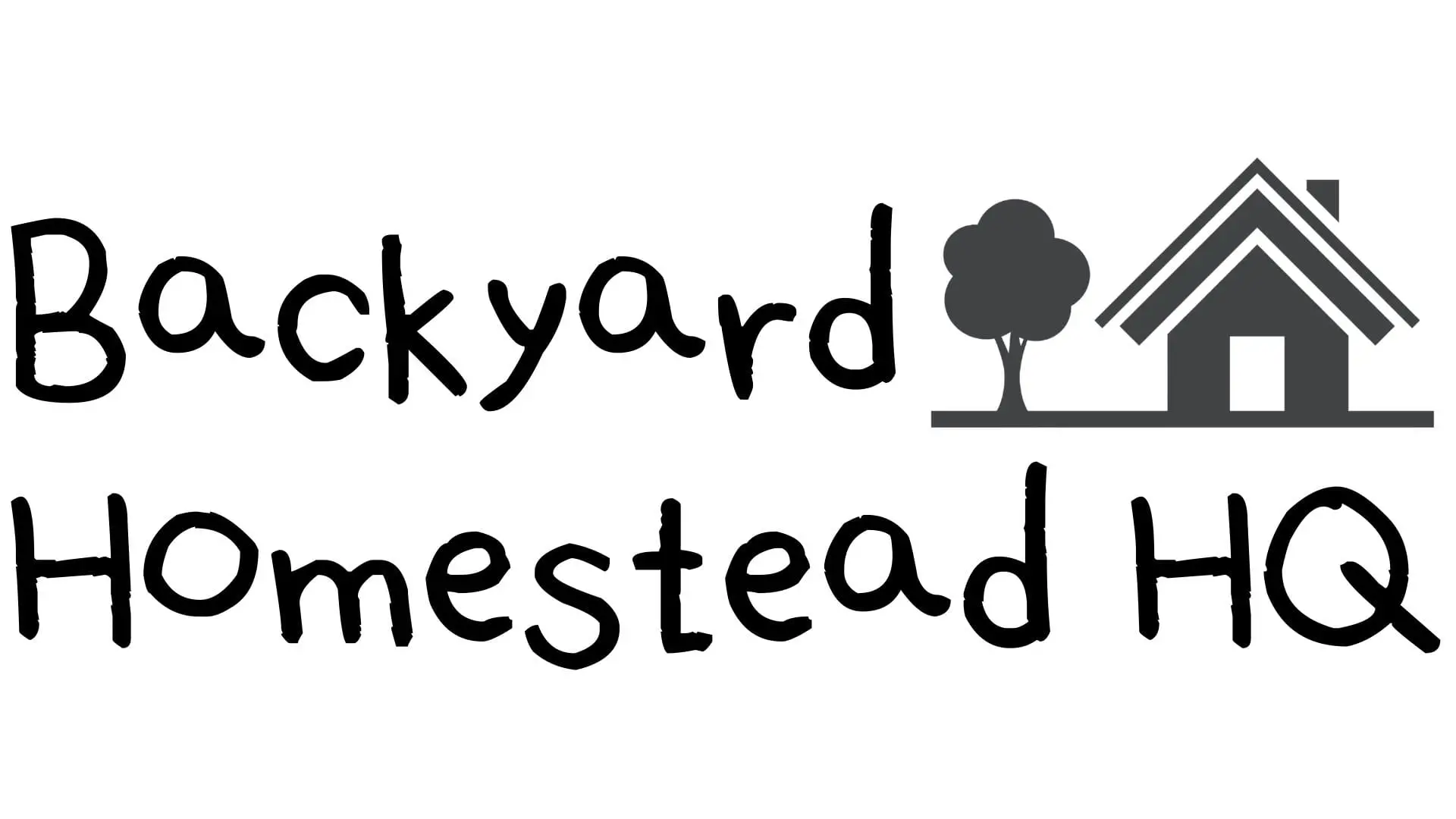Carrots are delicious, nutrient-rich vegetables that are easy and affordable to produce at home. Not only that but they can also be grown in many different climates! If you’re interested in producing your own carrots, it’s important to know exactly how to grow them.
Carrots cannot grow on trees. They are root vegetables, which means they grow directly from the soil. To grow carrots, shallow seed drills must be made in the ground. The carrot seeds then need to be sown into the seed drills at a depth of 1cm-2cm. This is the only way to grow carrots.
This article will explain in more detail how to grow carrots and how to harvest them, so keep reading to find out more!
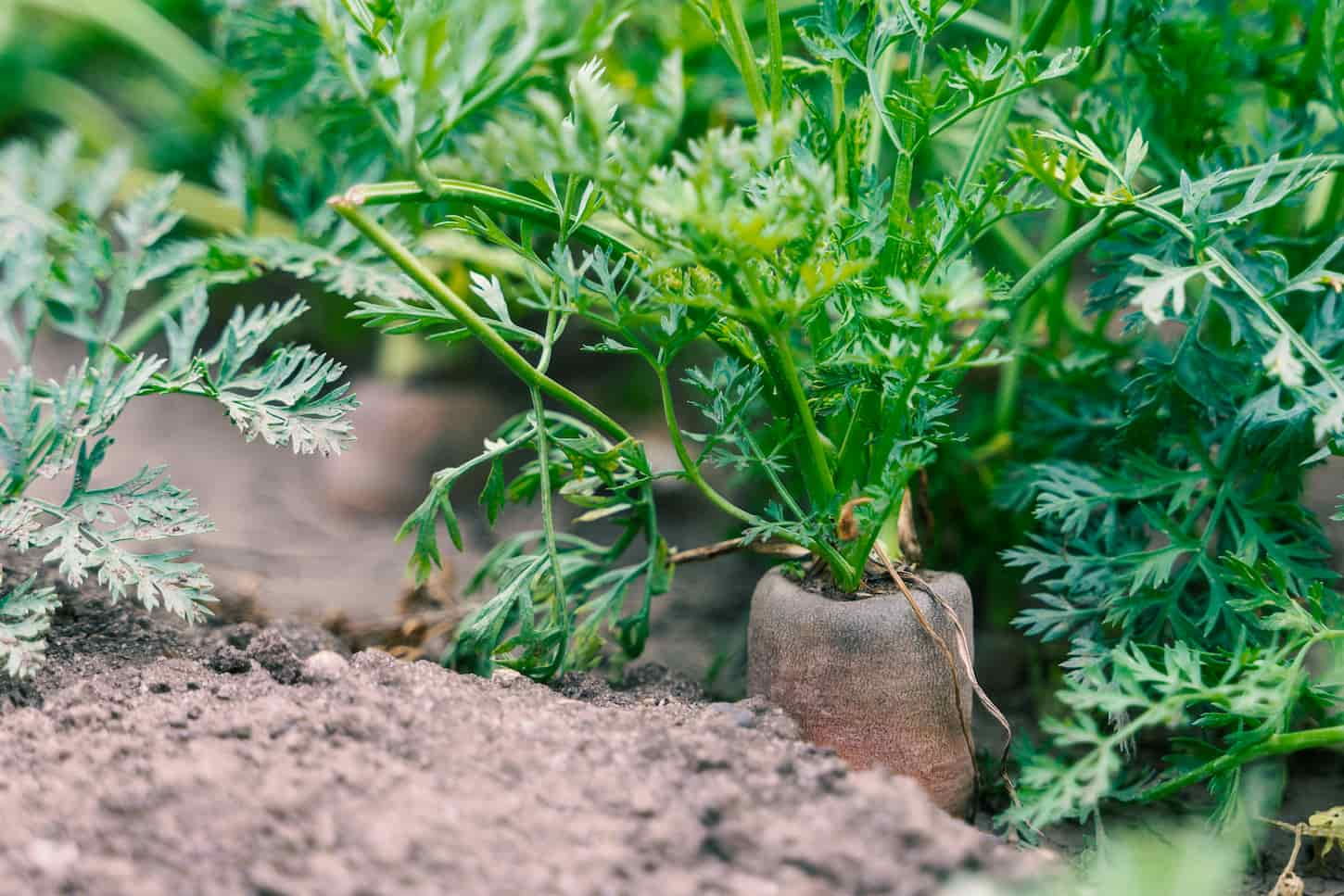
How Does a Carrot Tree Grow?
Carrots grow in the ground and not on trees, so a “carrot tree” is most likely to be a staged image where carrots of varying sizes are hung from a tree. In this way, the image could look like it’s showing a carrot tree, even though such a thing is not possible.
The green stem and top of a carrot are what will be poking out of the ground, so keep that in mind. Carrots can’t grow on trees. In fact, let’s talk about how to actually grow carrots next.
How to Grow Carrots
Carrots grow from the ground and start as seeds. Since they are root vegetables, they grow downwards in the soil. They are known as root vegetables because the edible part of the plant (the carrot) is the root.
As stated earlier, carrots cannot grow on a tree. However, they’re easy to grow if you can prepare the soil properly.
By creating smooth, loose, moist soil and planting carrot seeds, you can enjoy them within a few weeks.
How to prepare the soil for carrots and plant the seeds
Before planting carrot seeds, you must prepare the soil.
To prepare the soil, it’s important to ensure that it’s flat and bump-free. To get rid of any bumps or stones, you can use a rake.
Then, you can create shallow drills in the ground and place your seeds within them. Once that’s done, you can cover them with soil and some water. After that, all you need to do is wait for the seeds to germinate.
It’s good to have soft, moist soil for the best results. This allows the carrots to grow downwards without being impacted by solid soil. If the soil isn’t soft and light, the carrots can grow deformed.
Does your garden soil not absorb water? Read my article on why that is and how to fix it here: 11 Reasons Your Garden Soil Doesn’t Absorb Water (with 18 fixes!).
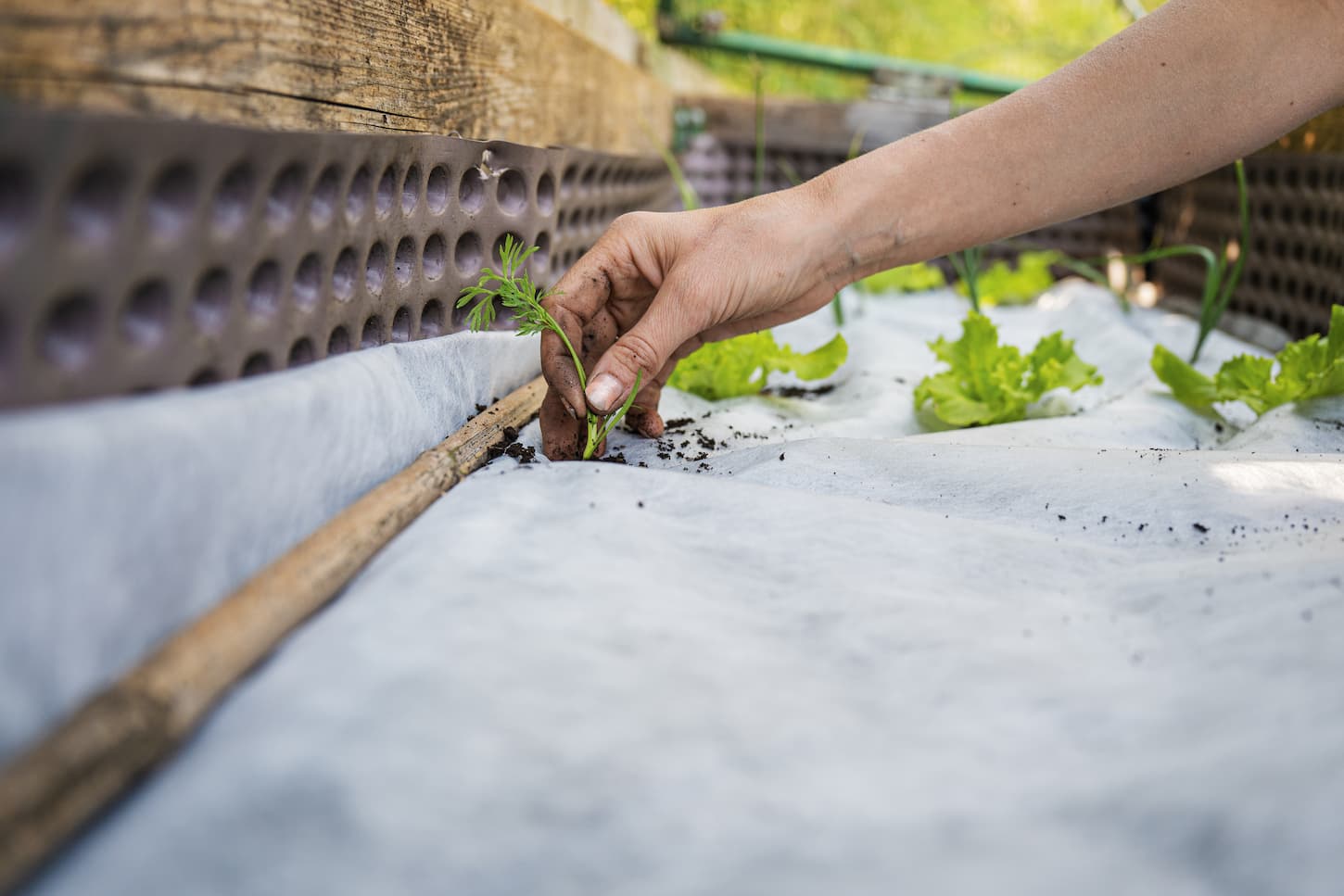
Where Do Carrots Like to Grow?
Carrots like to grow in areas with direct sunlight. They don’t, however, like to grow in places that are too hot or dry. They grow nicely when the soil is light and soft, rather than heavy and dense.
Carrots are grown in many places across the world, including China, Russia, the United States, Poland, and Japan. Carrots grow well in Utah, for example, as long as I amend the soil so it’s not pure clay.
They are cool-weather vegetables, meaning they grow easier in cooler climates. However, it’s still possible to grow them in warmer places; they might just taste stronger and need more watering.
When I lived in Arizona, for example, carrots didn’t grow there as well. They still grew, but I had to adjust my growing season to the cooler months.
Do carrots grow in the forest?
Carrots don’t usually grow in forests due to the number of shaded areas within forests. Since carrots grow better with sunlight, a forest would block a lot of it.
With forest gardening, the soil is usually quite uneven. This isn’t ideal for carrots because they can get curved and damaged in uneven soil.
The best place to grow carrots is an open space with soft soil that has been prepared. The rows need to be spaced out, which is another reason a forest isn’t ideal; there wouldn’t be enough open space for rows.
Do Any Vegetables Grow on Trees?
Although many fruit varieties grow on trees, there aren’t any vegetables that grow on trees.
Let’s look at the different ways vegetables grow:
- Under the soil (root vegetables): Root vegetables are grown under the ground, and they need to be pulled up once they’re ready. Examples include carrots and turnips.
- Vine or bush vegetables: Some vegetables grow on vines, for example, tomatoes and pumpkins. Some of the vines are bush varieties, meaning they get so large as to look like a bush. This includes bush beans and bush squash.
- Stem vegetables: These vegetables grow from the ground, and they are supported by strong and sturdy roots. Examples of stem vegetables include broccoli and asparagus.
Now, I’ve seen some bush vegetables that get so large as to look like a small trees. But they’re still a bush veggie.
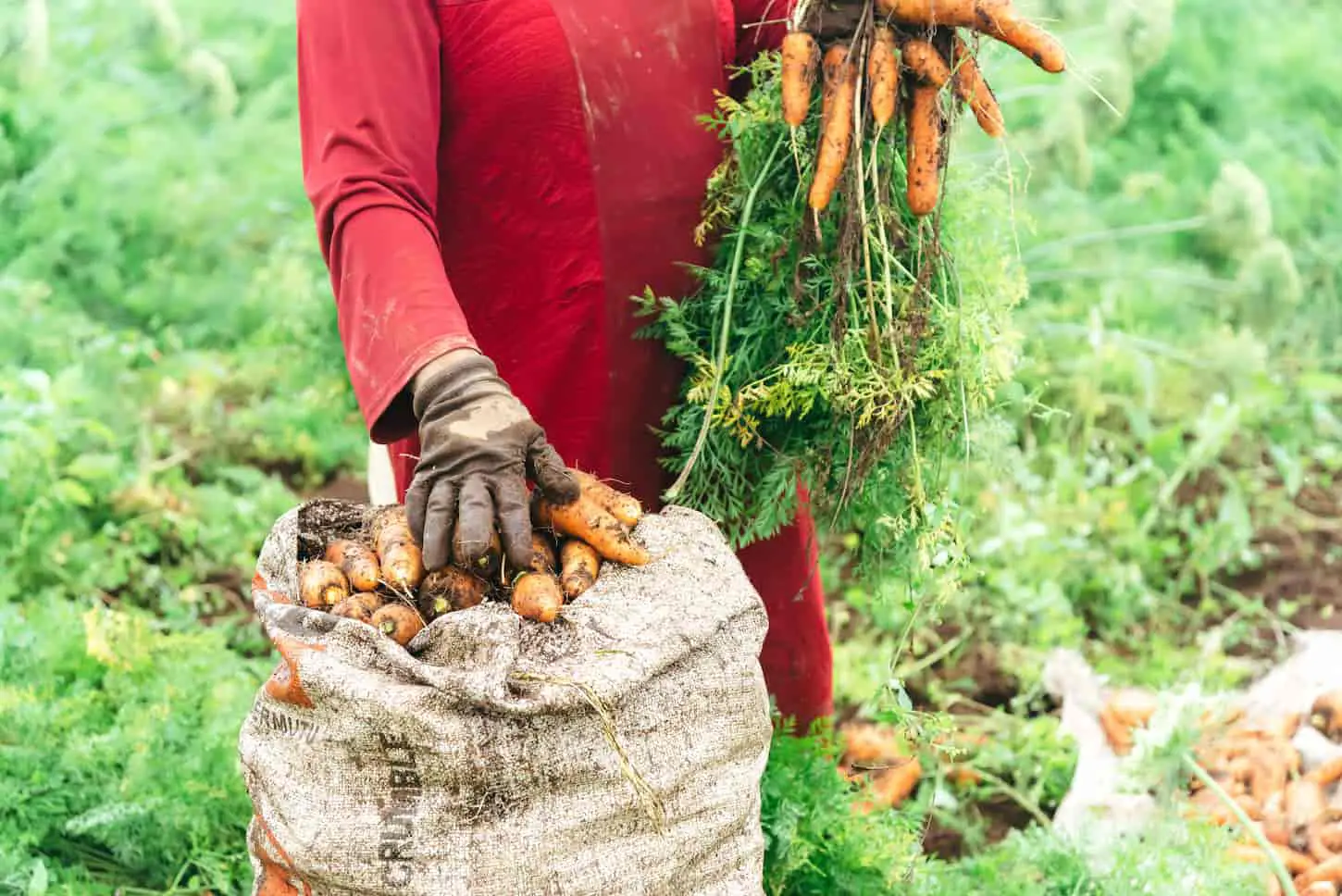
Harvesting and Storing Carrots
Harvesting and storing carrots can be a lot of fun, though you also must be familiar with them so that you don’t miss the right harvest window.
If carrots don’t grow on trees, how to tell when to harvest them?
When foods grow on trees, it’s easy to tell when they’re ready because everything is visible. However, carrots are underground, so it can be more difficult to tell.
Knowing when to harvest your carrots is one of the most important steps; you don’t want to ruin all your hard work and patience by harvesting them too soon or too late.
For the most part, you can check the seed packet. This should tell you how long to wait until picking out your carrots.
However, if you no longer have your seed packet, it’s not the end of the world! In most cases, carrots are ready at approximately 75 after being sown. Keep in mind this is a rough estimate, and the time it takes varies depending on the type of carrot.
Pro tip: if the carrot leaves have gone to seed, then it’s past the usual time to harvest. You can still harvest them, though.
How to harvest carrots
If your soil was prepared adequately (if it’s soft and feathery), you shouldn’t experience any difficulties pulling the carrots out from the soil. If you’re finding it a little difficult, you can loosen the soil with a rake or a three-pronged garden fork.
For some forgotten, extra-large carrots, I’ve found a regular shovel works, too.
- Just dig up 6 to 8 inches out from the carrot first. You may be able to loosen it up enough further away from the carrot so you can pull it out.
- Digging right next to the carrot risks damaging or breaking the carrot with the shovel.
Then, all you need to do is pull on the foliage until the carrots come out. If the foliage breaks off, you can simply dig around the carrots until they are removable.
How to store carrots after harvesting
Carrots can be stored in a pantry, fridge, box of sand, freezer, dehydrated, or freeze-dried.
How you store your carrots depends on when you want to use them. If you don’t want to use them straight away, you can leave them in a box with moist sand.
You can even leave them in the soil for longer if it’s not overly wet. In this case, all you need to do is harvest them once you want to use them.
Alternatively, you can keep them in your refrigerator. If you store them this way, you’ll need to consume them within a few weeks.
Freezing them is a viable option if you don’t plan on using them for a few months. All you need to do is cut off the ends and dice them up.
Other ways to store carrots include dehydrating them and freeze-drying them. Personally, I’m not a huge fan of dehydrated carrots, but I do like them freeze-dried.
Then, you can seal them in freezer bags, Mylar bags, or mason jars and store them away.
Want to know if you can freeze food in mylar bags? Get my answer here: Can You Freeze Food in Mylar Bags?
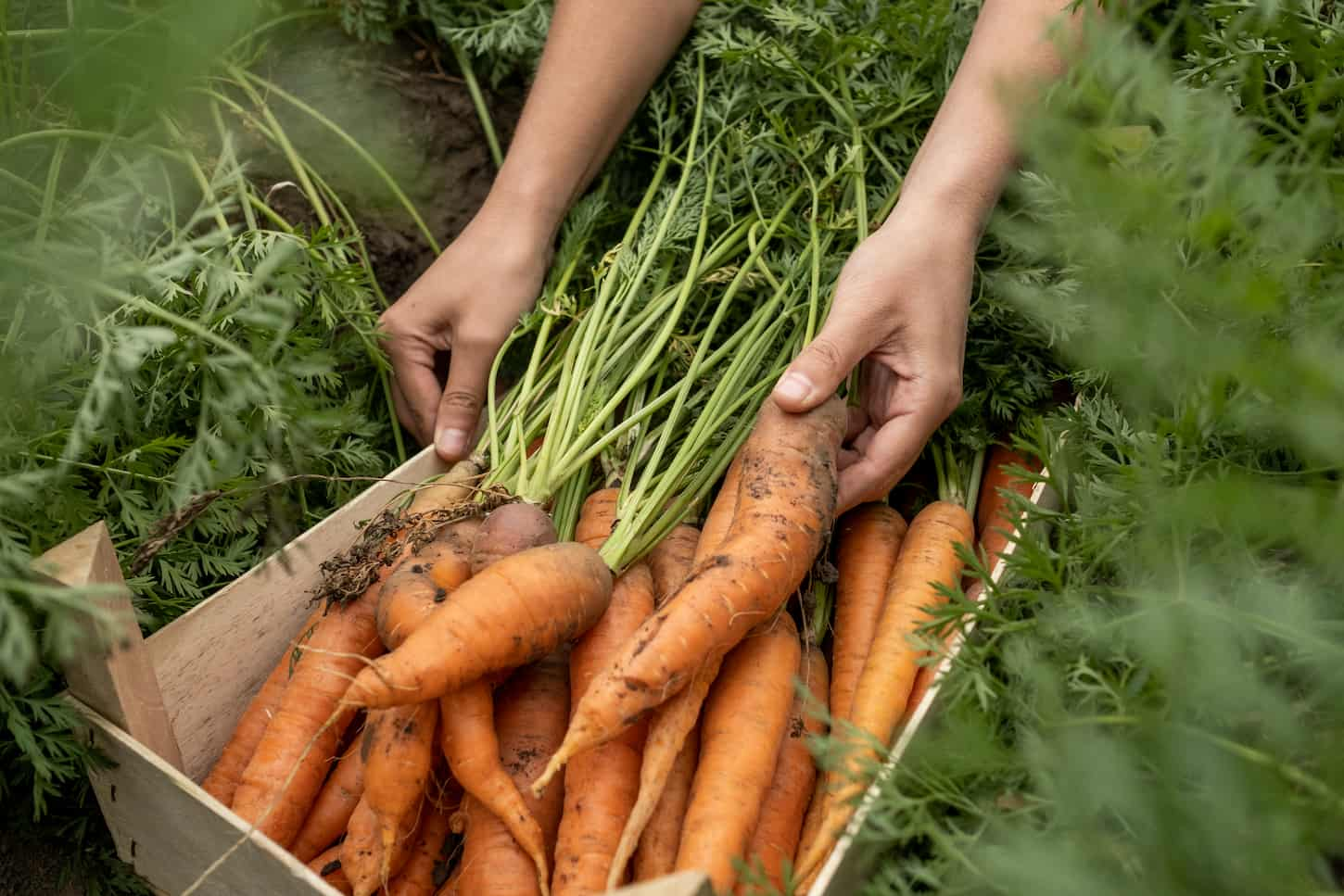
Final Thoughts
Carrots cannot grow on trees, but they can easily be planted in the ground if the soil is soft and moist. Hopefully, after reading this article, you now have the knowledge to grow your own!
In any case, now that you know more about carrots and how they actually grow (not on trees), give this article a read next: Why Does My Lettuce Taste like Dirt? (4 Possible Reasons). You’ll be surprised to learn that there’s an easy, safe, and natural way to fix that dirty taste lettuce sometimes has, whether you grew it yourself or if you got it from the store.
Resources
Learning from your own experience is essential, but learning from others is also intelligent. These are the sources used in this article and our research to be more informed as homesteaders.
- Burton, James. “Where Are Carrots And Turnips Grown?” World Atlas, 25 Apr. 2017, www.worldatlas.com/articles/the-countries-growing-the-most-carrots-and-turnips-in-the-world.html.
